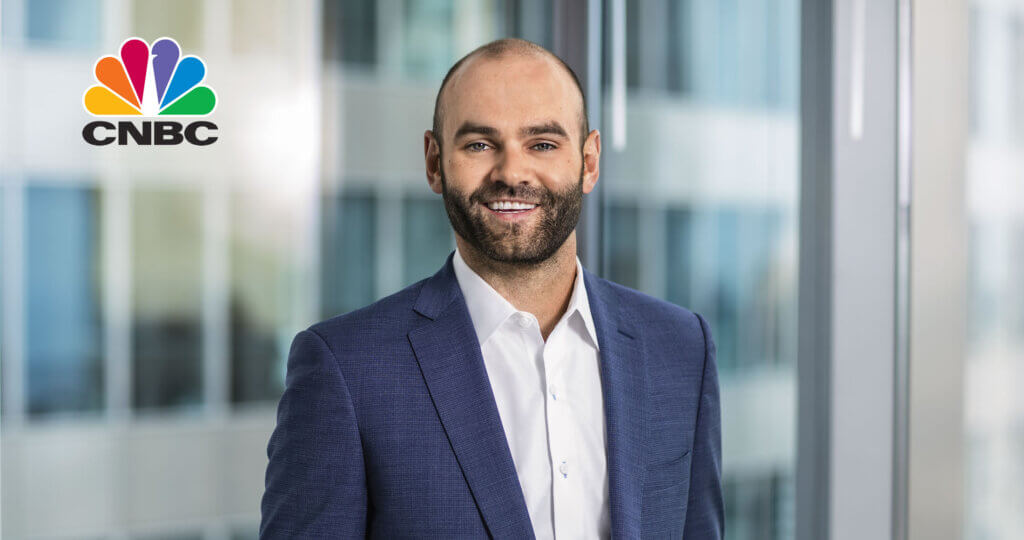Oakmark Equity and Income Fund – Investor Class
Average Annual Total Returns 12/31/17
Since Inception 11/01/95 10.38%
10-year 6.87%
5-year 9.99%
1-year 14.46%
3-month 4.22%
Gross Expense Ratio as of 09/30/17 was 0.87%
Net Expense Ratio as of 09/30/17 was 0.78%
Past performance is no guarantee of future results. The performance data quoted represents past performance. Current performance may be lower or higher than the performance data quoted. The investment return and principal value vary so that an investor’s shares when redeemed may be worth more or less than the original cost. To obtain the most recent month-end performance data, view it here.
2017, We Will Miss You
As 2017 began, many investors greeted the new year with apprehension. Having become comfortable with the Obama administration over its two terms, most assumed that the change to something quite different would lead to investor insecurity and market volatility. Instead, what developed was a gently ever-ascending bull market, the least volatile in more than 50 years and the first year ever to post positive total returns (for the S&P 500) in every month. The stock market’s ability to defeat expectations is legendary, and 2017 deserves its entry in the book of surprises.
For calendar 2017 as a whole, the Equity and Income Fund showed a gain of 14.5%, compared to 14.1% for the Lipper Balanced Fund Index, the Fund’s performance benchmark. The Fund earned 4.2% in the quarter, which contrasts to a 3.6% gain for the Lipper Index. As always, we are pleased to report that the annualized compound rate of return since the Fund’s inception in 1995 is 10.4%, while the corresponding return to the Lipper Index is 5.2%.
The largest contributors to portfolio return in the quarter were Bank of America, TE Connectivity, UnitedHealth Group, Ally Financial and Dover. CVS Health, Baker Hughes, General Electric, Philip Morris International and Oracle detracted most. For all of calendar 2017, Bank of America, TE Connectivity, MasterCard, General Motors and UnitedHealth Group led the contributors while Foot Locker, Baker Hughes, CVS Health, General Electric and Flowserve (sold) detracted most from return.
Transaction Activity
During the quarter, we added a few small positions to the Fund, while exiting five holdings. Among the new names were Johnson Controls and PDC Energy. Johnson Controls took a new shape in 2016 by spinning off its automotive seating business and then merging with Tyco International. The emerging entity, known as Johnson Controls International, provides building products, services and solutions, including HVAC, as well as fire and security monitoring. JCI also leads the world in supplying lead acid batteries to the automotive industry. Since the merger, the company has struggled with operational issues, which caused the board to accelerate the CEO transition, naming ex-Tyco CEO George Oliver to the position in September 2017. We know Oliver from his tenure at Tyco and believe he will do an excellent job. JCI is currently trading at less than 13x 2018 cash EPS, which we believe is much too cheap for this collection of moderately growing, high-returning businesses.
PDC Energy is an exploration and production (E&P) company focused on drilling the Wattenberg field in Colorado and the Delaware basin in west Texas. Their Colorado assets are among the most productive in U.S. onshore drilling, showing some of the best full cycle cash-on-cash returns in the E&P industry. Because of this, PDC enjoys a favorable position on the oil and gas cost curve. Throughout the energy downturn, PDC management maintained one of the strongest balance sheets in the industry, which allowed them to be opportunistic, entering the Delaware basin through a 2016 acquisition at an attractive price. We think there is significant upside to the Delaware acreage, relative to PDC’s assumptions at the time of the acquisition, and believe that adding quality acreage when commodity prices are low can significantly increase long-term value for shareholders. PDC’s acreage is in close proximity to a number of other large E&P companies, which could make PDC a natural acquisition target as the Wattenberg and Delaware basins mature and E&Ps seek to consolidate acreage to reduce drilling costs.
The five positions eliminated this quarter were TD Ameritrade, General Electric, Herman Miller, Oshkosh and VWR. TD Ameritrade was added to the portfolio in 2012 and performed extremely well. We still like the underlying business and management team, but after tripling from our initial purchase price, the stock is close to reaching our estimate of its fair value. General Electric was a small position that performed poorly since its addition to the portfolio last quarter. We decided to capture the short-term tax loss in the holding, and we are still evaluating whether to reinitiate a position. Shares of Herman Miller and Oshkosh both attained their respective sell targets.
Fixed Income Positioning
The big news in the fixed income world is that the Federal Reserve moved rates up more aggressively in 2017. After a single 25 bps rate increase (0.25%) in both 2015 and 2016, the first such increases since 2006, the Federal Reserve raised rates three times in 2017. The Fed also indicated that it expects three more rate escalations in 2018, with a few more after that, making the long-term forecast for the federal funds rate 2.75%. These increases boosted the yield on cash held by the Fund to over 150 bps and provided some relief for savers. These changes also caused the yield curve to flatten by over 70 bps as the year progressed. This is not an uncommon result when the Fed is raising rates, and the current slope is fairly typical for this point in the cycle. Looking ahead, if the yield curve maintains its current slope and the federal funds rate hits the Fed’s long-term target, the 10-year treasury yield will exceed 3% in a few years. While we don’t have an explicit rate forecast, in an environment with good economic growth and 2% inflation, this certainly seems like a reasonable outcome.
To protect against rising rates, we have maintained a short-duration position, especially in the Fund’s treasury allocation. We have ventured out a little further on the corporate side on some issues, where we believed that wider-than-deserved credit spreads could insulate us from rising rates. The result is that the fixed income portion of the Fund, including cash, has returned on average nearly 3% over the past two years. Looking ahead, while we may increase the duration of the portfolio slightly, we still plan on maintaining a conservative duration posture. As a reminder, the goal for the fixed income portion of the Fund, especially in this low-rate environment, is to provide a reasonable level of income, while dampening the volatility of the equity portfolio.
What Do We Think About Bitcoin?
Actually, we don’t think about bitcoin much at all, but we are subjected to an endless stream of articles on the subject, most expressing the same sense of wonder that we generally feel. In a year of historically low volatility in the conventional securities markets, writers have latched on to bitcoin as something that is interesting even if inexplicable. We have no real opinion on bitcoin because we are in the business of valuing investable securities, and, in our opinion, bitcoin does not lend itself to such evaluation. Equities have sales, profits, cash flows and assets, attributes that can be measured, evaluated and forecasted. We sift through the equity universe to identify issues that we believe the marketplace has priced incorrectly and that offer attractive risk-adjusted return possibilities. Fixed income securities offer stability and income, and we attempt to determine which issues best help to diversify the portfolio.
Bitcoin does not offer such attributes. It was originally described as a sort of currency, but few businesses ever developed the systems to use it for transactions. Of course, any that did would not likely be accepting bitcoin today, given the wild volatility in its price. For example, on Friday, December 22, bitcoin’s dollar price fell as much as 30% intraday before rebounding. This volatility limits the so-called cryptocurrency’s usefulness as a store of value. The history of hacking of bitcoin accounts also undermines the assertion that bitcoin is the new gold. Finally, we should highlight the lack of governmental regulation of cryptocurrencies (of which bitcoin is merely one of many) to date. If—or, should we say, when—regulators enter the picture, we believe that this market will look quite different.
But what of “blockchain,” the peer-to-peer ledger system that records cryptocurrency transactions? Interestingly, it is here that we think we can identify a manic bubble. The blockchain idea itself is unquestionably useful and adaptable to many purposes. The mania that we are diagnosing is the excitement over small companies that have announced their entry into the blockchain world. A recent example is Long Island Iced Tea, which changed its name to Long Blockchain. The company stated that it would be “shifting its primary corporate focus towards the exploration of an investment in opportunities that leverage the benefits of blockchain technology.” That catalyzed a share price gain of as much as 500% in the morning of the announcement. Another example is LongFin, a company whose share priced jumped over 1000% after it announced that it was buying Ziddu.com, a company with its own digital currency. Even LongFin’s founder flatly stated, “This stock move is unwarranted.” Similar experiences include Bioptix, which renamed itself Riot Blockchain, cigar maker Rich Cigars (now named Intercontinental Technology), Vapetek (now Nodechain) and Crypto Company, a penny stock whose share price enjoyed a 2700% gain in one month. We do not have any fundamental opinion on any of these companies, but history suggests to us that thrill-seeking speculators (to use The New York Times’ wonderful phrase) have taken over their trading.
We close this section with some comments that entertained us when researching this issue. From Joseph Stiglitz, Nobel Prize-winning economist: “Bitcoin is successful only because of its potential for circumvention, lack of oversight… It doesn’t serve any socially useful function.” From Larry Fink, chief executive of BlackRock: “Bitcoin just shows you how much demand for money laundering there is in the world.” And Yale economist Robert Shiller writes that “Somehow bitcoin…gives a sense of empowerment…That kind of is a solution to the fundamental angst [of this era].” Do not expect to see any cryptocurrencies in any Oakmark portfolio.
As always, we thank our fellow shareholders for investing in the Equity and Income Fund.
The securities mentioned above comprise the following percentages of the Oakmark Equity and Income Fund’s total net assets as of 12/31/17: Bank of America Corp. 5.3%, TE Connectivity, Ltd. 3.9%, UnitedHealth Group, Inc. 2.6%, Ally Financial, Inc. 1.8%, Dover Corp. 2.6%, CVS Health Corp. 2.2%, Baker Hughes a GE Co. 1.2%, General Electric Co. 0%, Philip Morris International, Inc. 2.0%, Oracle Corp. 2.3%, MasterCard, Inc., Class A 2.6%, General Motors Co. 5.1%, Foot Locker, Inc. 1.2%, Flowserve 0%, Johnson Controls International PLC 0.6%, PDC Energy Inc. 0.4%, TD Ameritrade Holding Corp. 0%, Herman Miller, Inc. 0%, Oshkosh Corp. 0%, VWR Corp. 0%, Blockchain 0%, Long Blockchain 0%, LongFin Corp 0%, Riot Blockchain 0%, Intercontinental Technology 0%, Nodechain 0%, The Crypto Company 0% and New York Times Co. 0%. Portfolio holdings are subject to change without notice and are not intended as recommendations of individual stocks.
The net expense ratio reflects a contractual advisory fee waiver agreement through January 28, 2018. Harris Associates has agreed to continue the advisory fee waiver agreement through January 28, 2019.
The S&P 500 Total Return Index is a market capitalization-weighted index of 500 large-capitalization stocks commonly used to represent the U.S. equity market. All returns reflect reinvested dividends and capital gains distributions. This index is unmanaged and investors cannot invest directly in this index.
The Lipper Balanced Fund Index measures the performance of the 30 largest U.S. balanced funds tracked by Lipper. This index is unmanaged and investors cannot invest directly in this index.
The quoted Long Blockchain comment is taken from a statement from the company dated December 21, 2017.
The quoted LongFin comment is taken from a December 18, 2017 Financial Times article titled, “Blockchain fervour evokes memories of dotcom bubble”.
The New York Times phrase referenced is taken from a December 12, 2017 New York Times article titled, “I Was Wrong About Bitcoin. Here’s Why.”
The quoted comment from Joseph Stiglitz is taken from a November 29, 2017 Bloomberg TV interview titled, “Stiglitz Says Bitcoin ‘Ought to Be Outlawed'”.
The quoted comment from Larry Fink is taken from a statement given during an October 13, 2017 Institute of International Finance meeting.
The quoted comment from Robert Shiller is taken from a September 5, 2017 Quartz article titled “Robert Shiller wrote the book on bubbles. He says the ‘best example right now is bitcoin’”.
The Fund invests in medium- and lower-quality debt securities that have higher yield potential but present greater investment and credit risk than higher-quality securities, which may result in greater share price volatility. An economic downturn could severely disrupt the market in medium or lower grade debt securities and adversely affect the value of outstanding bonds and the ability of the issuers to repay principal and interest.
The Oakmark Equity and Income Fund’s portfolio tends to be invested in a relatively small number of stocks. As a result, the appreciation or depreciation of any one security held by the Fund will have a greater impact on the Fund’s net asset value than it would if the Fund invested in a larger number of securities. Although that strategy has the potential to generate attractive returns over time, it also increases the Fund’s volatility.
The discussion of the Fund’s investments and investment strategy (including current investment themes, the portfolio managers’ research and investment process, and portfolio characteristics) represents the Fund’s investments and the views of the portfolio managers and Harris Associates L.P., the Fund’s investment adviser, at the time of this letter, and are subject to change without notice.
All information provided is as of 12/31/2017 unless otherwise specified.





